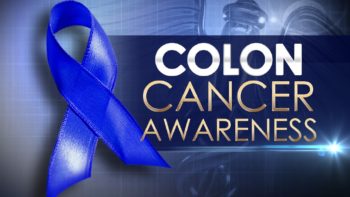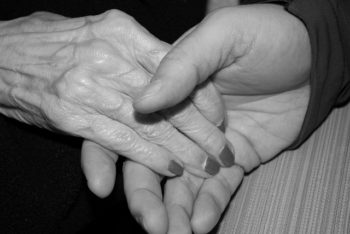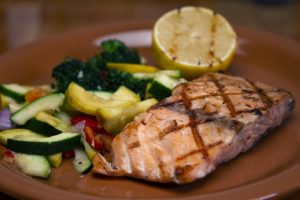 THE BOTTOM LINE ON COLON CANCER
THE BOTTOM LINE ON COLON CANCER
Hello everyone and welcome back to the Blog.
March is always a busy month. We celebrate Women’s History Month, the first day of Spring and, of course, Colon Cancer Awareness Month.
As many of you know, colon cancer was the first of three cancers with which I was diagnosed. My diagnosis came early in my life and caught me completely off-guard as I was a healthy, slim, athletic, non-smoking vegetarian. Who would have thought?
So, I always spend time in March sharing my experience and knowledge with others in the hope they can be better prepared should they – or a loved one – face a similar diagnosis.
I find it’s always helpful to understand the risk factors for this cancer and accordingly, that’s exactly how we’ll begin, with the 7 primary risk factors for colon cancer.
GENDER
Colon cancer is the third most common among both women and men. Yet, women have a higher risk for developing colon cancer.
GEOGRAPHY & RACE
The highest rates for this cancer are found in the industrialized nations of the world. In contrast, the lowest rates are found in South America, Africa and Asia. Moreover, colon cancer is most common in African-American women and men – and least common in Hispanics, Asian-Americans, Native Alaskans and Native Americans.
PERSONAL HISTORY
Women who have a history of breast, ovarian or uterine cancer share a higher risk for colon cancer. Also, women and men who have a history of colon polyps, ulcerative colitis or Crohn’s disease have an increased risk for this cancer. In addition, individuals who have diabetes have an increased risk of 30 to 40 percent for developing colon cancer.
FAMILY HISTORY
As with many cancers, heredity is a powerful force in determining who is at risk for developing this disease. In my case, for example, even though I appeared to be the last person who would be diagnosed with this cancer, it ran in my family.
After my diagnosis, I discovered two maternal uncles had developed this disease, and my mother had a history of colon polyps – all of which pose a greater risk for family members.
 In fact, anyone who has a first-degree relative –a parent, sibling or child – who has had colon cancer also has an increased risk for the disease. Anyone with a family history of hereditary non-polyposis colon cancer (HNPCC), MYH-associated polyposis or familial adenomatous polyposis also has an increased risk for colon cancer.
In fact, anyone who has a first-degree relative –a parent, sibling or child – who has had colon cancer also has an increased risk for the disease. Anyone with a family history of hereditary non-polyposis colon cancer (HNPCC), MYH-associated polyposis or familial adenomatous polyposis also has an increased risk for colon cancer.
AGE
As with most cancers, our risk for developing this disease typically increases as we grow older. However, as my personal case illustrates, younger people also are developing colon cancer and in most of these cases, there will be a hereditary factor. Otherwise, this cancer is typically found more often in individuals over the age of 50.
LIFESTYLE
Tobacco use, alcohol abuse, lack of exercise and excess weight all contribute to one’s risk for colon cancer. Yet, diet is one of the most important and is evident in that people who live in industrialized countries have the highest rates of colon cancer, and these countries also have diets that are among the highest in fats.
Accordingly, I also want to share a list of 5 healthy foods that studies show can help protect us from this cancer.
- Dairy products are rich in calcium and vitamin D, both of which may help to prevent colon growths called adenomas.
- Whole grains are packed with fiber that aids our digestion and may help move cancer-causing compounds through and out of the digestive tract.
- Beans and legumes also are packed with fiber and contain flavonoids, which can prevent cancerous tissue from growing.
 Colorful fruits and veggies contain phytochemicals that may block the growth of cancer cells and fight the inflammation that can fuel cancer.
Colorful fruits and veggies contain phytochemicals that may block the growth of cancer cells and fight the inflammation that can fuel cancer.- Fish, like wild salmon, is loaded with omega 3 fatty acids which may slow the growth of cancer cells.
Of course, we all need to consult with our primary physician first before beginning any cancer-protection program. Doing so will help us assess our personal risk for cancer and the best ways to help prevent it.
Remember, half the battle in fighting cancer is to understand our own personal risks for a particular cancer. The other half is to take pro-active action to develop a strategy to protect our health and warn of potential trouble.
And on that note, thanks for joining me everyone. Let’s continue to do everything we can to raise awareness for Colon Cancer Month, and to stay informed and ready to act!
Until next time, please stay safe, stay in GOOD HEALTH and . . .
TAKE THE COURSE AND TAKE CHARGE! 
 Colorful fruits and veggies contain phytochemicals that may block the growth of cancer cells and fight the inflammation that can fuel cancer.
Colorful fruits and veggies contain phytochemicals that may block the growth of cancer cells and fight the inflammation that can fuel cancer.


Leave a Comment